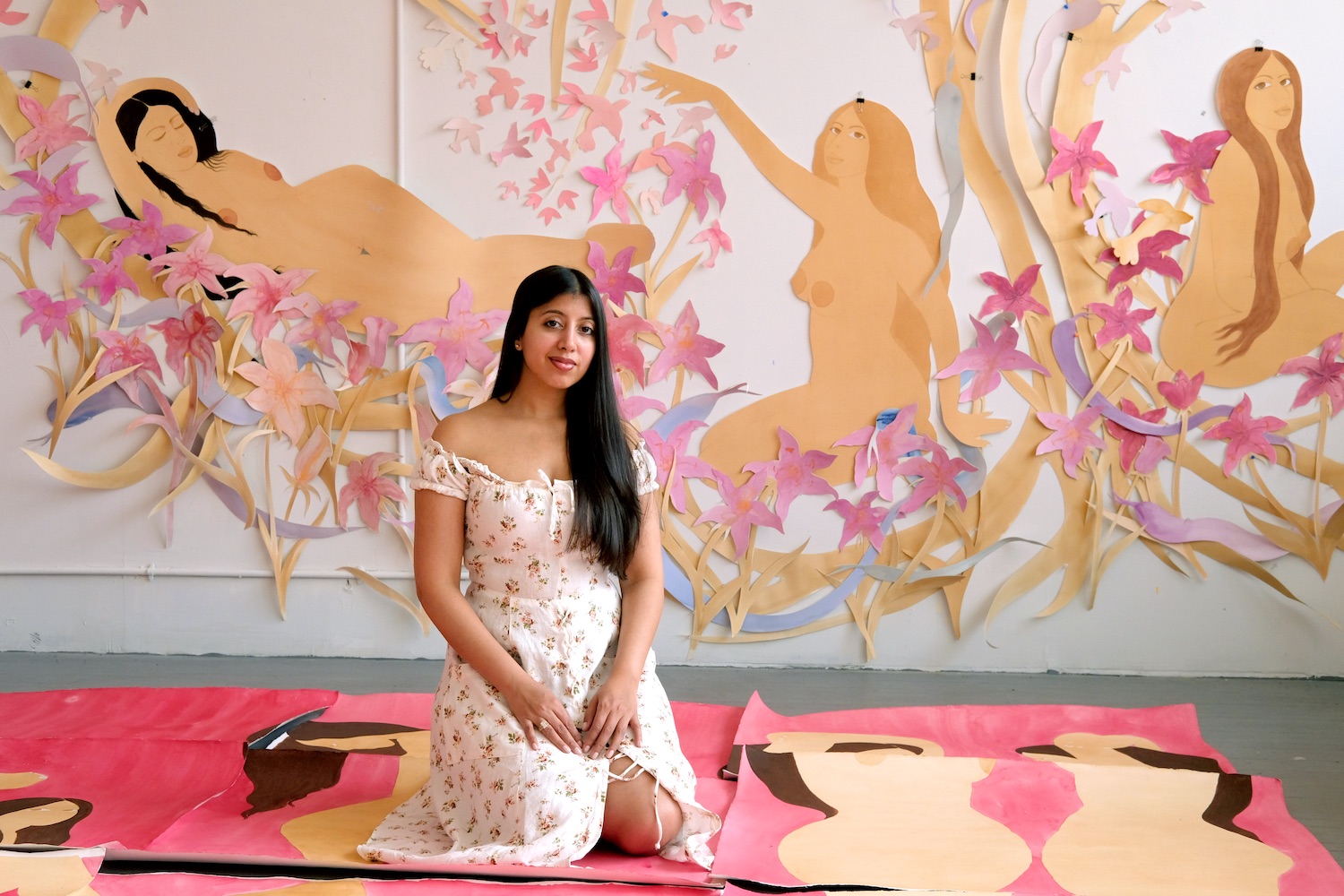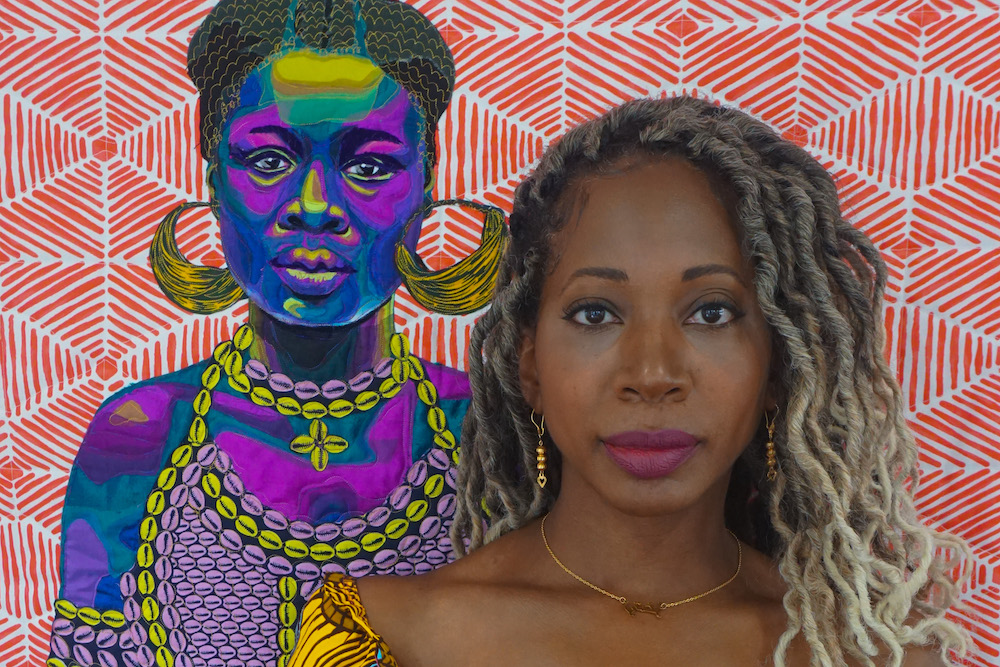Over the past year, Louis Fratino has been experimenting in printmaking. A self-described classicist, he was drawn to a method enjoyed by Rembrandt, Picasso, and Matisse. The New York–based artist is known for his paintings, drawings, and sculptures that capture a tenderness and celebration of his life, and the world around him—be it his own figure, an interior space, a garden, a vase of flowers. With references in image and material to art history’s greats, creating black-and-white etchings felt like a natural move.
There’s an element of magic Fratino feels happens when the hand of an artist transforms something like charcoal, pastel, or oil paint into a work of art that has its own “vitality or life force,” as he describes it.
The exhibition at Sikkema Jenkins paired his pieces with work by the late artist Tony Feher, and followed his “Growths of Earth” solo show at Ciaccia Levi in Paris. The latter was packed with vibrant, color-filled, large-scale pieces that captured light and a love of nature. Working on an upcoming spring show at Galerie Neu in Berlin—where he’ll be returning for the first time since his Fulbright grant in 2016—Fratino spoke with Whitewall about keeping the studio a space free from fear of failure.
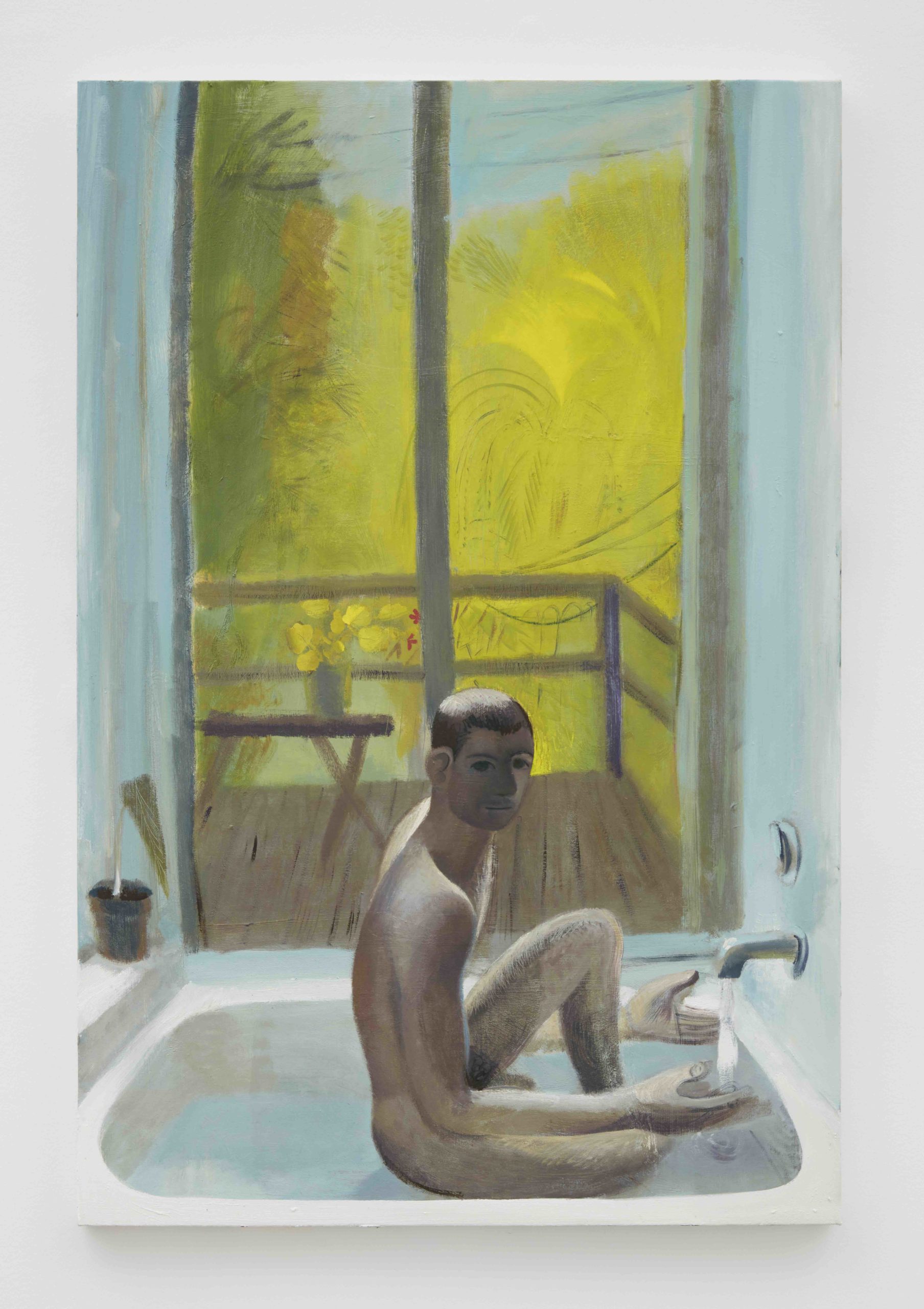
Louis Fratino, “July,” 2020, oil on canvas, 57 x 38 inches, © Louis Fratino, courtesy of Sikkema Jenkins & Co., New York.
WHITEWALL: This fall, you debuted new work in New York at Sikkema Jenkins, in a show with work by artist Tony Feher. What was the starting point for that show?
LOUIS FRATINO: I wanted to make prints. I was always interested in new modes of image-making and had loved looking at prints. I’d never done copperplate etchings before, so the gallery put me in touch with Gregory Burnet of Burnet Editions., who is a master printer here in the city. From April until June we were working on a series of editions. There wasn’t a particular show in mind, necessarily. I just really wanted to try printmaking and see what happened.
Then Michael Jenkins suggested doing a show with Tony Feher, who passed away in 2015 but worked with the gallery for a long time. Michael’s thinking behind it was that, really sweet, he thought we would have enjoyed each other. He was also a gay man, and there are not so many opportunities for my work to be shown in an intergenerational context. I’m really happy for it. I think it does a lot of good for my work because I work in a way that’s lovely for me, really celebrated, and part of this moment of figuration, queer figuration, and I’m happy to have it shown next to work that is so different than mine. It expands the way in which it could be thought about or understood, which is a real honor for me.
WW: What made you interested in exploring printmaking?
LF: I’m interested in a type of classicism in the studio and painting, but also in the sense of the term that the material they use is fairly classic—like oil paint, charcoal, pastel, terra cotta. Black-and-white etching felt like that to me, coming out of this very classic tradition. Matisse and Picasso made black-and-white copperplate etchings. And so I was interested in it from that point of view where I’m recycling so much art history in my painting and wanted to see what happens to my vocabulary, my mark using this material that was also used by the people I reference.
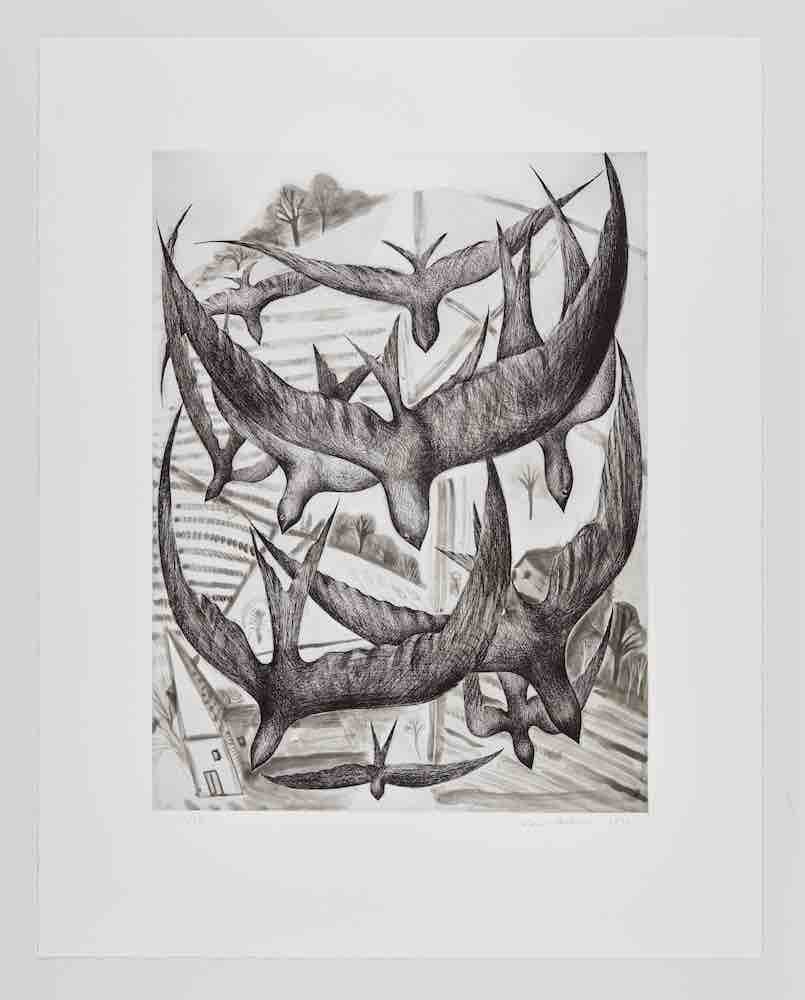
Louis Fratino, “Chimney Swifts,” 2021, etching with aquatint, spitbite, drypoint, and burnisher, 33 x 26 inches, © Louis Fratino, courtesy of Sikkema Jenkins & Co., New York.
WW: What was the experience like?
LF: It was really exciting because it’s physically drawing into metal. It almost felt like this sort of hybrid between an experience of drawing, but also an experience of sculpture. When I work in terra cotta it’s a lot of letting something that I’ve sculpted dry, going back into it, and carving the forms to perfect them.
It’s really different drawing on paper and the timeline of making the imagery is so different where I’m working with Greg in the studio, twice or three times a week over several months focusing on this imagery. You åallow yourself to develop the image in a really rich manner.
WW: What was that like to continue to go back to their studio. Did it feel collaborative?
LF: It is really a collaboration between the printmaker and the artist. It’s really nice because there’s another artist or artisan here that’s full of good ideas that I can latch on to or absorb. It was really easy to be focused because you’re also wanting to match their level of enthusiasm and energy. And I know that those prints look the way they do because I did them with Greg, and he has a particular set of knowledge I wouldn’t have had access to otherwise.
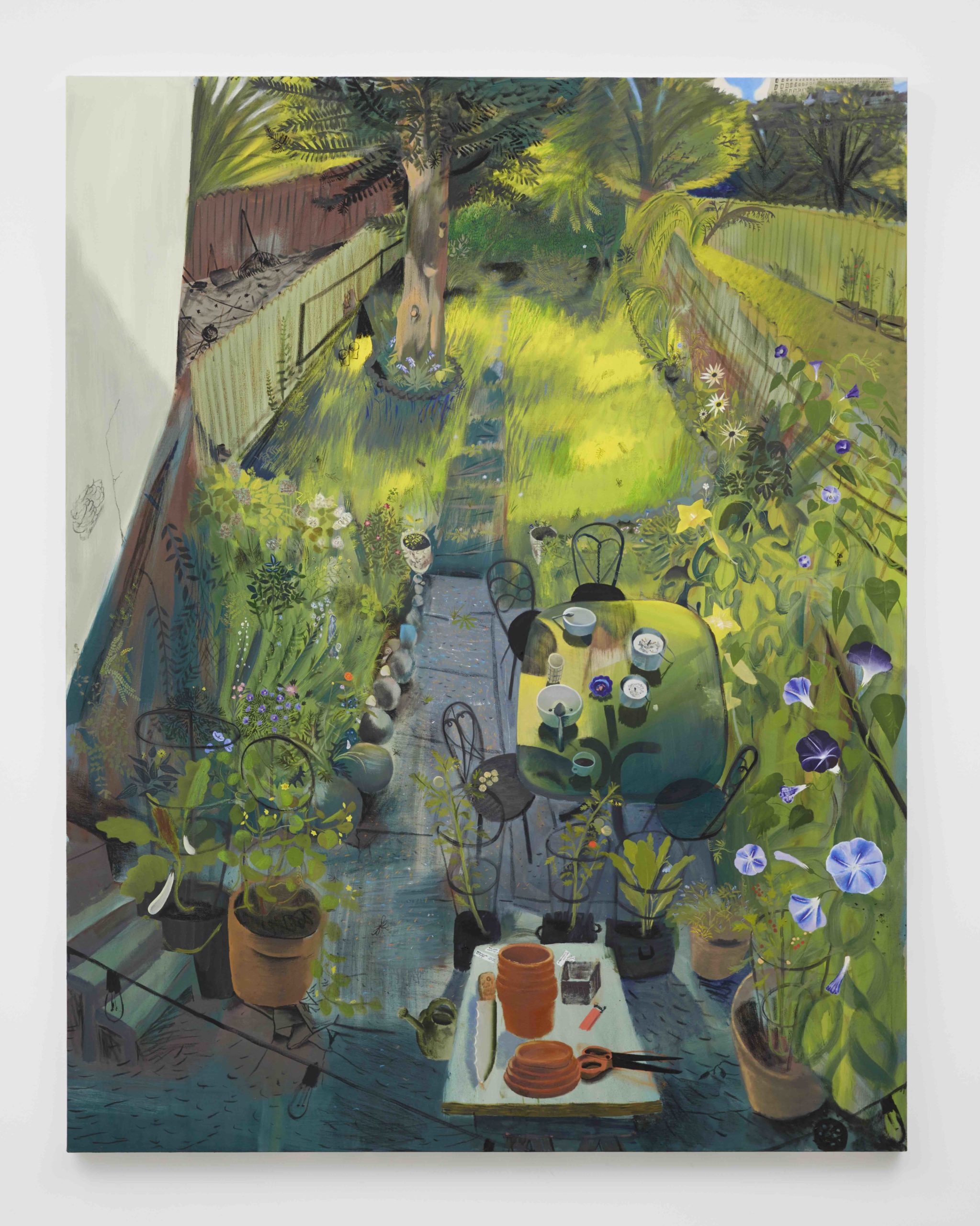
Louis Fratino, “Morning,” 2020, oil on canvas, 92 x 72 inches, © Louis Fratino, courtesy of Sikkema Jenkins & Co., New York.
WW: Is it something you want to continue doing?
LF: Yeah, I would love to.
WW: Are there elements of that experience you’ve brought back to your studio?
LF: Yeah, definitely. And I told Greg that, and he said that was one of the highest compliments. There’s this unfair distinction between printmaking or editions as a supplementary practice, something that is a more affordable version of a painting. It’s really not that. It’s really a whole other medium with marks, methods that are entirely unique to themselves. I feel like there were ways of drawing that I wouldn’t have been able to arrive at with charcoal, with pastel, that I really found satisfying. I could feel myself drawing in a way that maybe referenced those forms after the fact. Which was exciting, and is the whole point of trying something new.
Using these really traditional, organic technologies are inherently beautiful in their own way. I feel that way about ceramics and oil painting. It’s like any kind of activity, if there’s intention.
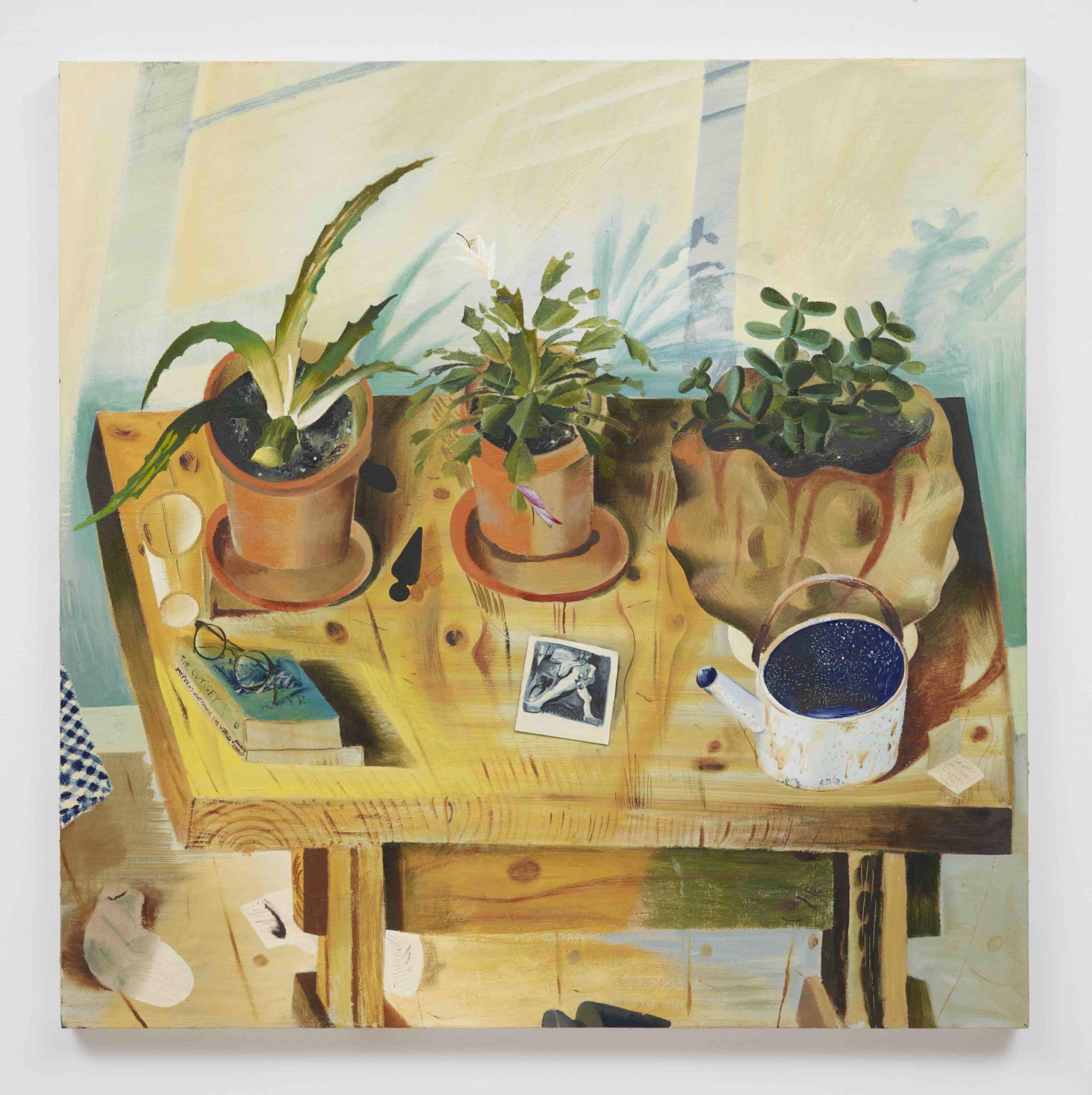
Louis Fratino, “Pinewood table,” 2020, oil on canvas, 45 x 45 inches, © Louis Fratino, courtesy of Sikkema Jenkins & Co., New York.
WW: You’ve said you’re interested in artworks that feel like a product of magic, and how that relates to some of your choices in material. How did that apply to this process?
LF: It really is like magic because I didn’t know anything about some of these methods of creating tones of gray onto etchings. I had imagined that the technology was fairly complex or even new, but it’s not, and it’s super organic. It’s really like magic where these natural materials produce something totally unrecognizable. I’m so much more impressed by work that is not heavily produced, that relies a lot on the hand of the artist and is about the transformation of something into something completely different, that has its own vitality or life force.
WW: You’ve talked about seeing your work as a way to process and enjoy your own life. How do you maintain that sense of joy?
LF: I think it’s more of a predilection for certain kinds of content or thought. I was talking to a friend going through a breakup and not able to make work about that, and then all of a sudden if you’re in love again it’s all you want to make work about, or you want to spend time thinking about that person, that face—that’s where I go in the studio.
There’s this Guston quote that says artists are always painting their daily life because they are painting everything they are missing out on when they are alone in the studio. I feel like that’s kind of true. If I’ve got to think about something for hours on end, it’s going to be something I love or that I can’t shake.
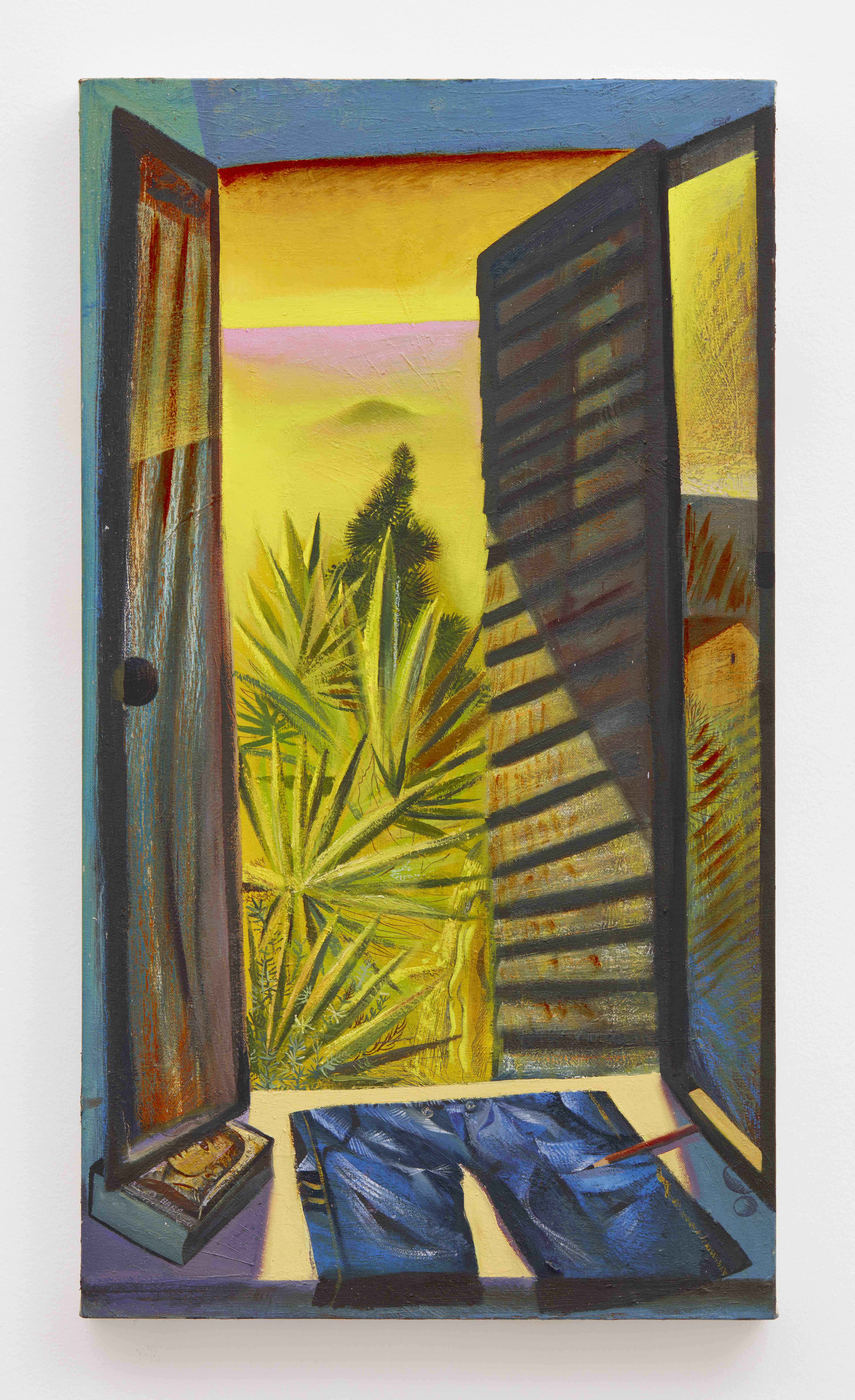
Louis Fratino, “View of Monte Cristo,” 2020, oil on canvas, 36 x 20 inches, © Louis Fratino, courtesy of Sikkema Jenkins & Co., New York.
WW: You’ve said that you’d like to keep the studio as a place for unselfconscious play and the spirit of failure as a productive state. Why is that the best headspace to be in, and how do you maintain that?
LF: I had a really excellent teacher at school, that was her mantra, her name is Jo Smail. She’s an abstract painter and her studio is amazing, it’s composed of all these bits and bobs of canvas, painting material, drawing—she plays, really. I found that my work really became its mature self when I took her seriously and started to say, “What the hell” before I started the painting and not try to force myself to make an artwork. Which has all this baggage that comes with it about what’s good, valuable, relevant, worth caring about.
It is so evident in drawing that a lot of my best drawings are the ones where I let myself wander through and arrive at something, because that’s where you actually invent. And I think maintaining that headspace in the studio for me not being overly in charge, I think. It’s the letting things happen accidentally or spontaneously. Or if I’m not satisfied, just painting over it. If I run out of a color, see what happens if I use this other thing that I avoided for months. Trying to have one step removed from being in charge, feeling like maybe it’s this parallel dance where the painting is asking me for something and I’m there, too, but it almost happens to me.
WW: Can you tell us about your studio and what your day-to-day is like there?
LF: This is just my third day in the studio. I was trying to work at my home for a while. I thought that was going to be great, because all I make is work about my home, basically, but all I wanted to do was home stuff, instead of painting stuff. And now that I’m here, it’s so much easier to be excited about painting because it’s the only thing I can do.
I’m someone who benefits from routine and structure, and I treat the studio like a nine to fie,v typically—not that I’m here at nine, but more in the sense that there is time during the week when I’m in the studio, and time when I’m definitely not. And that helps me be more productive. I usually get here by ten or eleven, and then I maybe am drawing a little bit, just looking around at what I’ve done and letting myself work on what attracts me.
I’ve got seven paintings going, and I really benefit from having a lot at once, because when something starts to become problematic, I don’t have to bang my head against the wall to try to figure it out. I can just move on to something else. And I think that gives the painting a kind of free feeling, a kind of joy to the painting where it hasn’t necessarily been labored over in a stressed-out way. The things that happen when I’m painting come from a place of wanting to work on it and feeling like I know what to do. It all comes from this carefree place of discovery or experimentation.
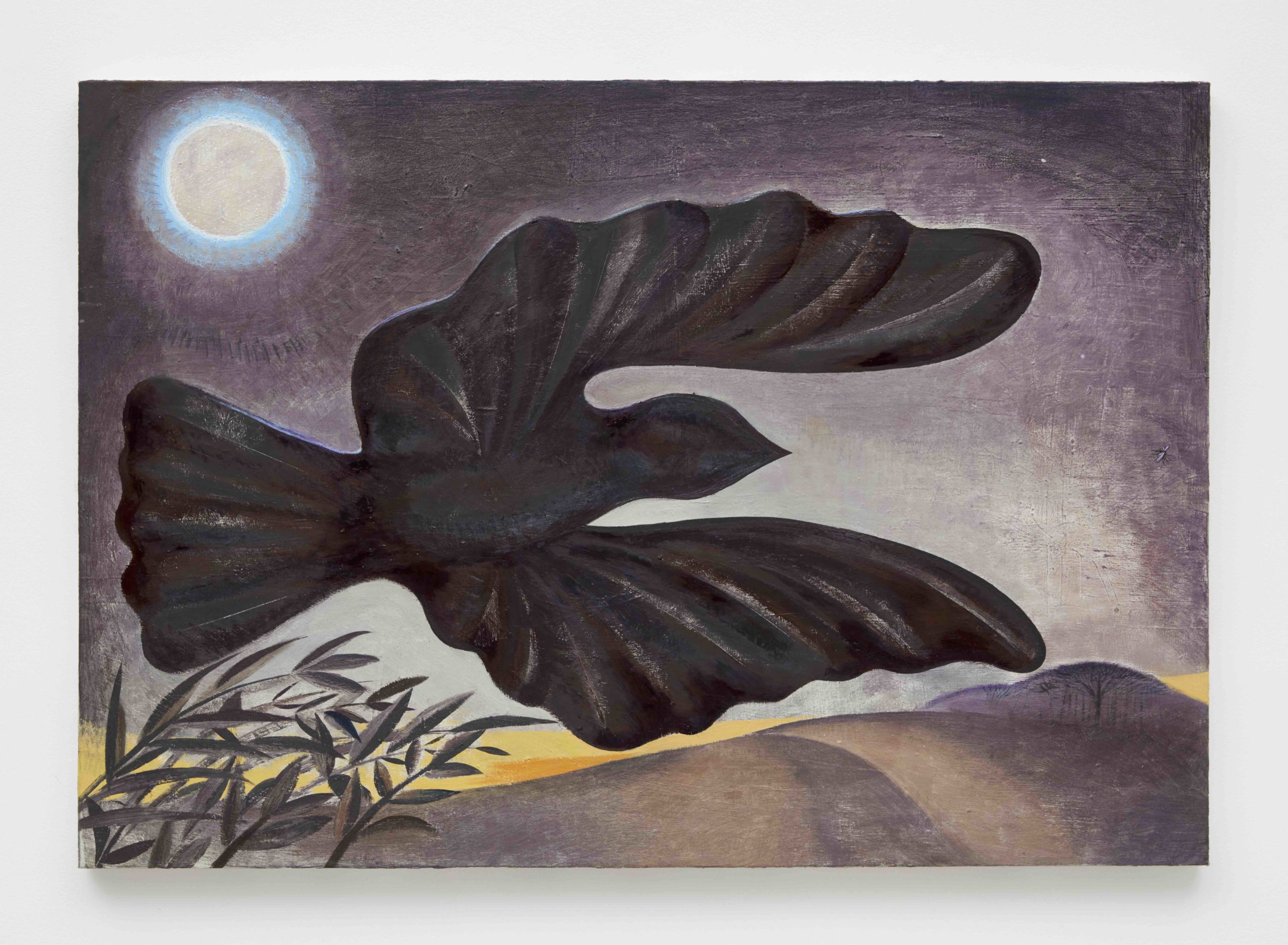
Louis Fratino, “Swift and mosquito,” 2020, oil on canvas, 36 x 52 inches, © Louis Fratino, courtesy of Sikkema Jenkins & Co., New York.
WW: You’ve got a show this spring at Galerie Neu in Berlin—will these be for that?
LF: I hope so. It depends if they’re good. Which sometimes they are not. Who knows if these images will survive, but definitely the work contributes to that show.
WW: Is there a direction you are going in?
LF: I’m figuring it out still. I feel that I was in a nice groove with the past two shows where the first one I had at Sikkema felt like a jumping-off point for the second body of work for the show I had in Paris.
I had an unfortunate thing happen where I had this show planned at an institution but it didn’t work out with some of the subject matter being in an American institution, and that was sad. But it also has given me a new appreciation for the power behind some of the more sexual imagery. And for a while, I felt suspicious of it, and I felt that it was not doing enough for what I wanted my work to do. But that experience has kind of shaken me up in a way that’s made me think about it a little bit differently.
In New York, we are so lucky that the kind of discourse we all enjoy about identity and freedom to be whoever we want, but it’s not the case everywhere in the world. That’s been something I’ve been thinking about because of that. It made me realize, even if something seems broken in New York, or not new, it’s not true everywhere in this country or the world. And that I actually make work for a bigger audience than New York.
It proved that this side of my practice that I’d always had, I don’t have to feel so suspicious of, that I know that there’s power in it. That’s not why I do it. It’s not about provocation or subversion or anything, it’s just the part of life that I enjoy as most people do. I want to paint in the same way I want to paint a lot of things I enjoy, like food, my family, or the natural world.
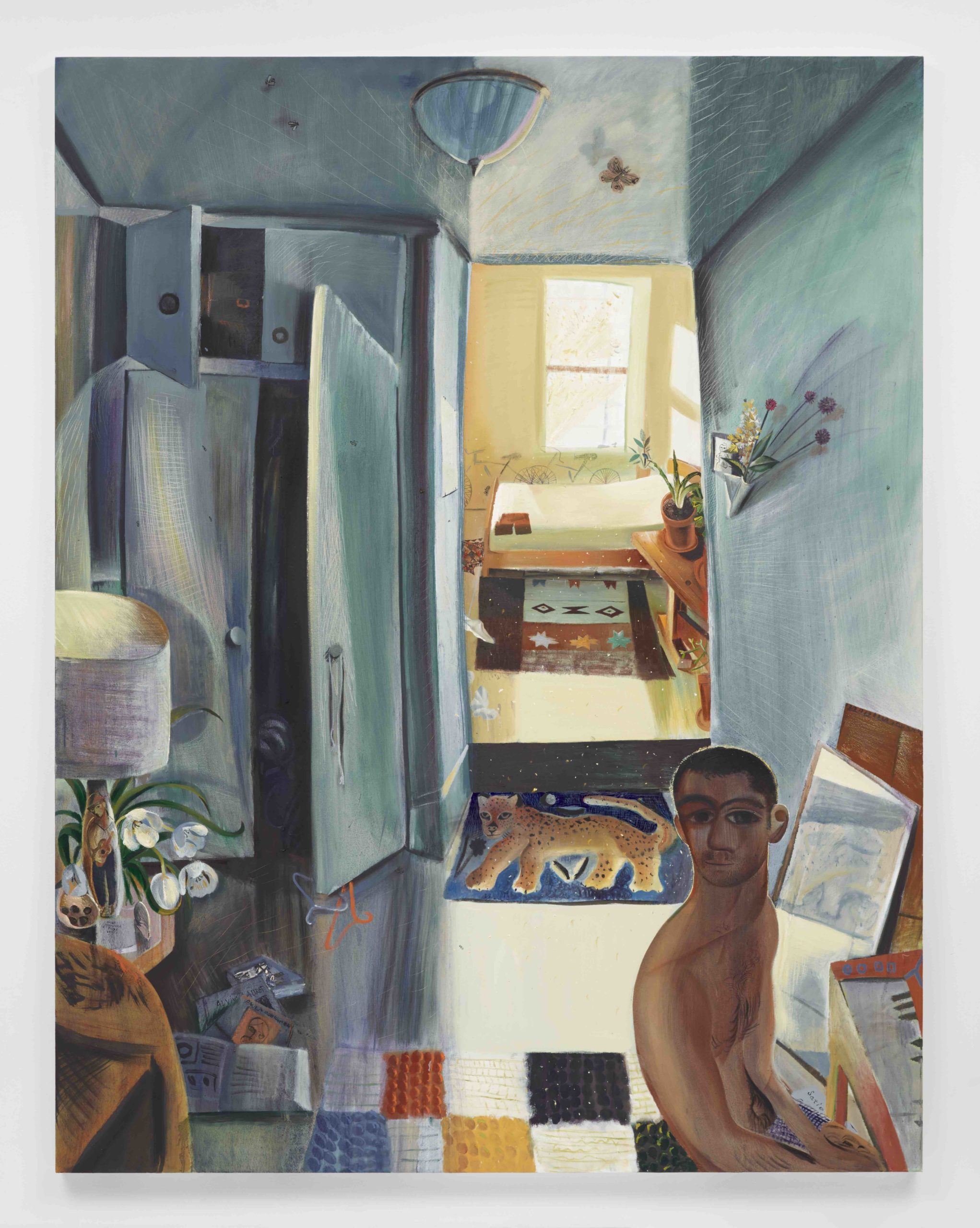
Louis Fratino, “Richardson Street living room,” 2020, oil on canvas, 90 x 70 inches, © Louis Fratino, courtesy of Sikkema Jenkins & Co., New York.
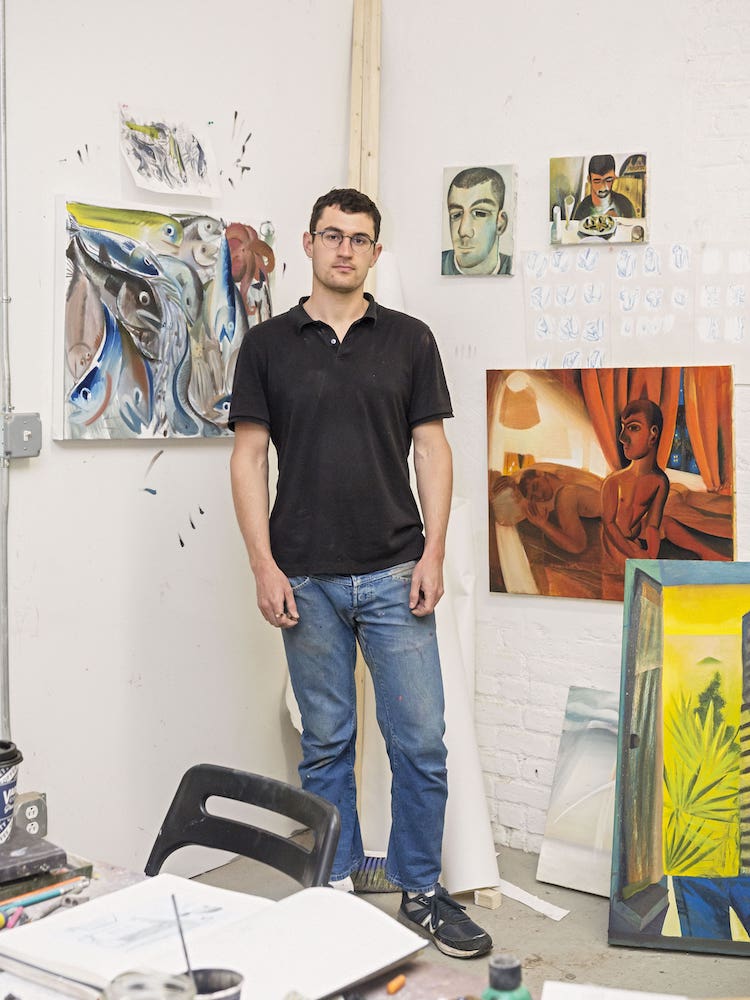
Portrait by Matin Zad.






